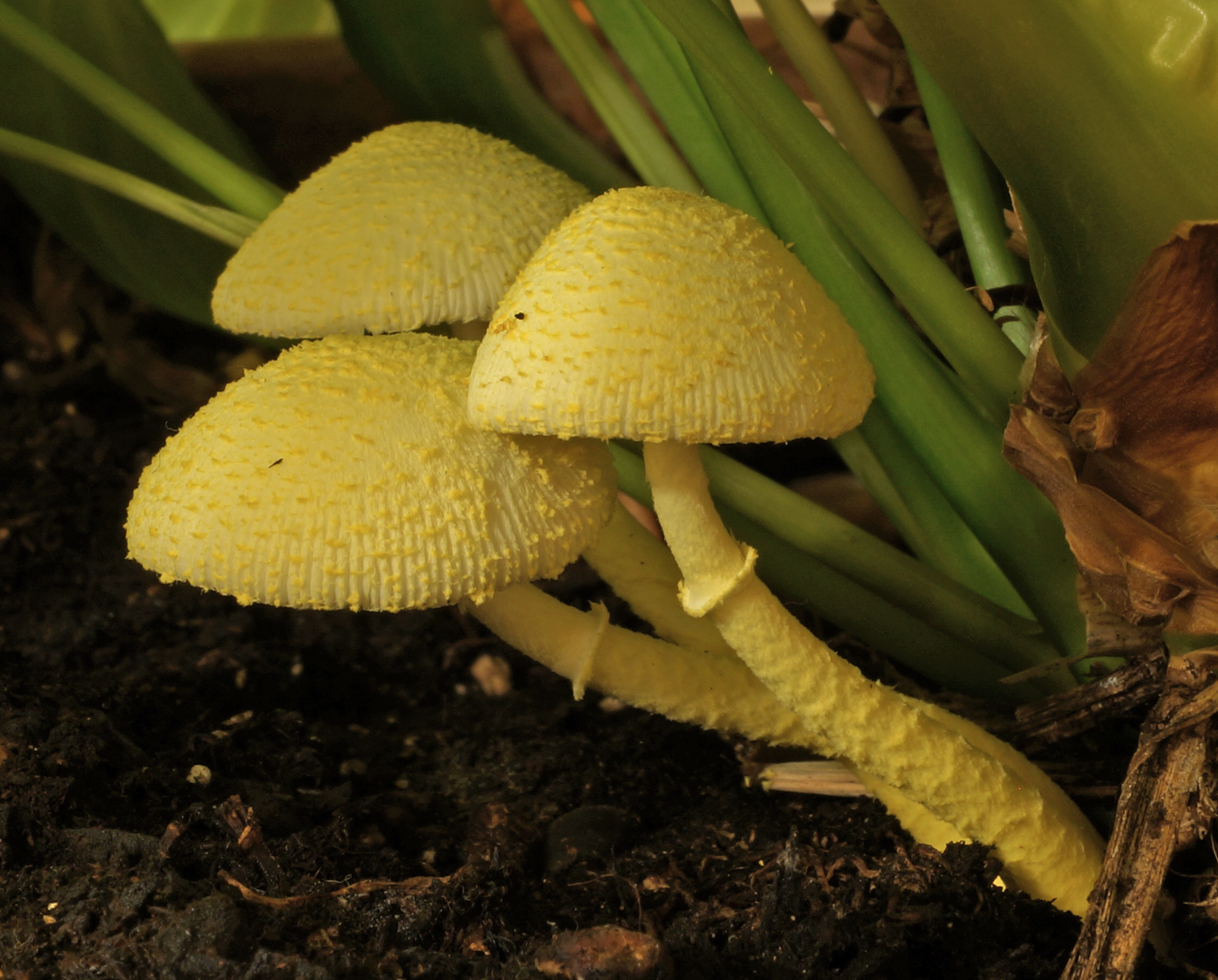Throughout the year in many online mushroom identification communities, people living in North America sometimes post a picture of a small, yellow mushroom growing out of the soil in one of their flowerpots. Mainly, they want to know what the charismatic fungus is, because they worry if it will harm their plants. It’s quite easy to identify, especially when the picture quite clearly shows the specimen sprouting from the household planters. Leucocoprinus birnbaumii is its name, and breaking down organic material from soil in tropical environments is its game.
Cap close up of L. birnbaumii. By Sava Krstic.
Yes, you heard me, this fungus evolved in more tropical environments, where temperatures rarely dip below 65°F (18°C). So why do people located in very northern latitudes encounter tropical mushrooms throughout the year? It’s really because of two reasons. The majority of plants that do really well in our homes are too from tropical regions. These plants we originally “domesticated” were once a sign of prestige. They came from exotic places and were expensive. Nowadays, houseplants aren’t at all that expensive, and are selected for more practical reasons; they do really well in constant temperatures e.g. our homes.
The flowerpot parasol, L. birnbaumii.
The cosmopolitan occurrence of this fungus really exploded along with the booming tropical plant trade. These plants cultivated in tropical regions enticed the spores of Leucocoprinus birnbaumii, living from the surrounding forest floor into germinating in their planters. With the mycelia of L. birnbaumii spreading through the organic material in their soil, these plants with their inoculated soil vectored this fungus all over the world.
Leucocoprinus birnbaumii. By Sava Krstic.
Also conveniently known as the flowerpot parasol, if L. birnbaumii does happen to show up in your home, you should marvel at its beauty and backstory. It is however important to note that the species is slightly poisonous, causing some severe stomach issues, so please refrain from eating it. With warmer conditions becoming more prevalent in this human dominated era, who knows, maybe the species will be found outside of our homes in more northern latitudes. About a decade ago, a specimen of L. birnbaumii was found growing from the forest floor in England.
[Link 1]





